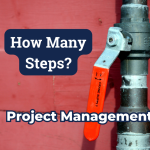
You get a few raised eyebrows when you claim to be Communicating with FINESSE. Well, at least you do if the person on the other end does not understand that FINESSE stands for something. Or if they do not understand what a fishbone diagram is. Here’s a short review of the origins of FINESSE and how the FINESSE fishbone diagram powers the communication of reliability engineers.
[Read more…]












